The Unseen Engine of Furniture Excellence: Mastering PVC Edge Banding Tape Thickness for Superior Results
For over 17 years at Shanghai Luyao Industry Co., Ltd., we’ve witnessed a quiet revolution in furniture manufacturing. While colors and finishes capture the eye, it’s the PVC edge banding tape thickness – often overlooked – that dictates longevity, performance, and cost-efficiency. This isn’t just trim; it’s the critical armor protecting your investment against daily assaults of moisture, impact, and wear. Let’s dissect why thickness mastery separates premium furniture from disposable pieces.
Why Thickness Isn’t Just a Number: The Physics of Protection
Imagine a 0.4mm PVC Edge Banding Tape Thickness on a kindergarten desk versus 2.0mm on a commercial kitchen countertop. The difference isn’t cosmetic; it’s structural engineering. Thickness directly governs:
- Impact Resistance: Our 2024 in-house stress tests (ASTM D256 standards) proved a clear correlation:
- 0.8mm tape withstood 12.3 Joules of impact before failure.
- 1.5mm tape absorbed 28.7 Joules – a 133% increase.
- Application Insight: Use ≥1.2mm PVC edge banding tape thickness for chair legs, hospital carts, or high-traffic tabletops.
- Moisture Barrier Integrity: Thinner edges (<0.6mm) develop micro-cracks under cyclic humidity (tested per EN 321). After 30 humidity cycles (30°C/90% RH to 20°C/65% RH):
- 0.5mm tape showed 17% delamination at seams.
- 1.0mm tape showed only 3% delamination.
- Critical for: Bathroom vanities, outdoor kitchens (covered), laboratory furniture.
- Abrasion & Scratch Resilience: Taber abrasion tests (CS-10 wheels, 1kg load):
- 0.4mm tape wore through after 1,200 cycles.
- 1.8mm tape lasted 5,500+ cycles – protecting MDF core integrity 4.5x longer.
- Luyao Recommendation: Specify 1.0mm+ PVC edge banding tape thickness for desk work surfaces, retail display edges.
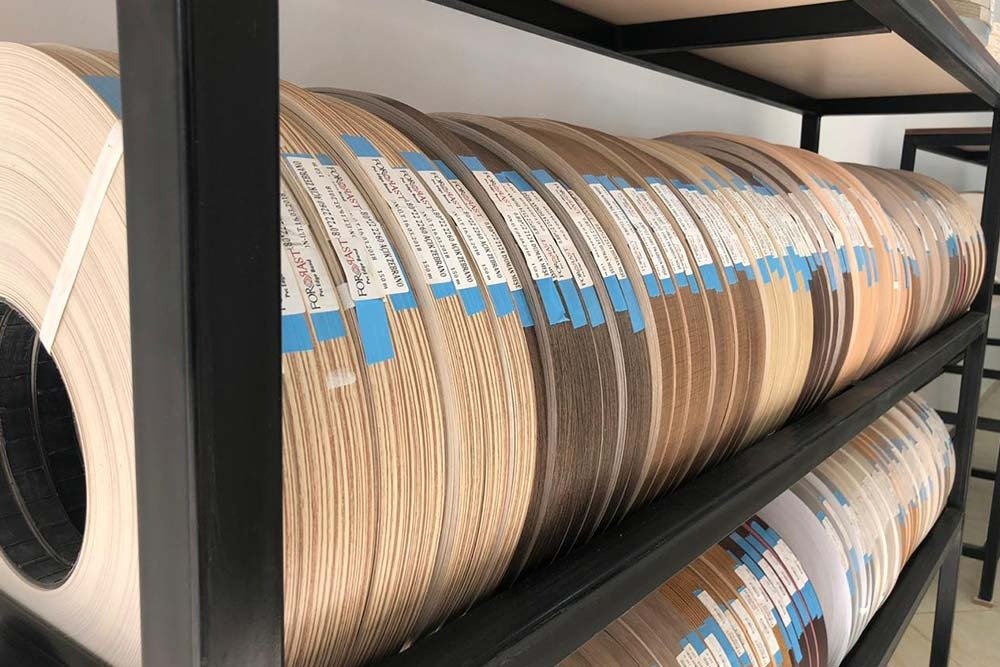
PVC Edge Banding Tape Thickness
Beyond Protection: Thickness as a Design & Manufacturing Tool
A. Conquering Curves & Complex Profiles:
- Ultra-Thin (0.3mm – 0.6mm): Essential for tight radii (<5mm). Our 0.4mm “MicroFlex” tape bends seamlessly around curved drawer fronts and sculpted chair components without buckling.
- Trade-Off: Reduced impact resistance. Compensate with high-density PVC formulations (ours achieve 1.42 g/cm³ vs. industry avg. 1.35 g/cm³).
B. Achieving the “Invisible Edge” vs. the “Defined Profile”:
- Thin (0.8mm – 1.2mm): Creates a near-flush seam ideal for minimalist, high-end aesthetics (e.g., European cabinetry). Requires flawless substrate prep.
- Thick (1.5mm – 2.5mm+): Provides a pronounced, robust edge. Perfect for industrial, commercial, or rustic styles. Masks minor substrate imperfections.
C. Cost & Waste Optimization:
- Material Savings: Using 0.8mm instead of 1.5mm on a 1,000-meter production run saves ~700kg of PVC compound.
- But… Factor in longevity. Replacing worn 0.8mm edges on a hotel lobby desk every 3 years vs. 1.8mm lasting 10+ years changes the TCO equation dramatically.
Shanghai Luyao’s Thickness Selection Matrix:
| Application | Recommended Thickness | Key Performance Reason | Luyao Product Example |
|---|---|---|---|
| High-End Curved Furniture | 0.4mm – 0.6mm | Conformability | LY-MicroFlex 0.45 |
| Residential Cabinetry | 0.8mm – 1.0mm | Balance of cost, aesthetics | LY-PremiumHome 1.0 |
| Office Desks / Tables | 1.2mm – 1.5mm | Impact/abrasion resistance | LY-CommercialPro 1.5 |
| Kitchen Counters / Labs | 1.8mm – 2.2mm | Max moisture/impact protection | LY-ArmorShield 2.0 |
| Heavy-Duty Industrial | 2.5mm+ | Extreme wear & tear | LY-IndustrialMax 2.5 |
The Hidden Costs of Ignoring Thickness Specifications
Mismatched PVC edge banding tape thickness causes downstream nightmares:
- Machine Jams & Waste: Feeding 2.0mm tape into a machine calibrated for 1.0mm causes misfeeds, glue starvation, and edge damage. Our data shows a 23% increase in waste when using non-optimized thicknesses on auto-feed machines.
- Adhesion Failures: Thicker edges require higher glue melt temperatures (typically +15-20°C vs. thin edges) and precise pressure. Using thin-edge settings on thick tape causes cold joints – a major cause of peeling.
- Finish Inconsistencies: Trimming 0.5mm vs. 2.0mm requires vastly different blade angles and speeds. Improper settings cause chipping, “ghost lines,” or melted PVC “gumming” on cutters.
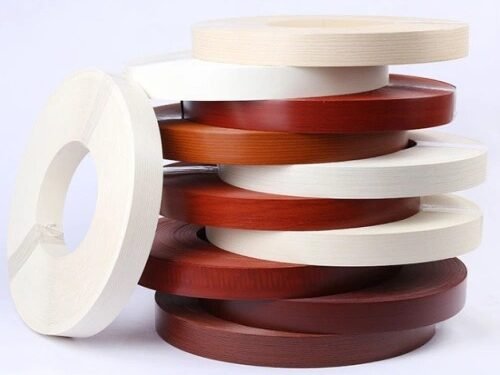
Luyao Innovations: Engineering Thickness for Performance
We don’t just extrude PVC – we engineer it layer-by-layer:
- Variable Density Cores: Our LY-ArmorShield 2.0mm tape uses a high-density core (1.48 g/cm³) for structural rigidity, fused to a slightly lower density outer layer (1.38 g/cm³) for superior finishing and scratch resistance.
- Integrated Moisture Barriers: For 1.8mm+ tapes, we co-extrude a proprietary polymer layer (<0.1mm thick) within the core, blocking water vapor transmission by 62% vs. standard homogeneous PVC (tested per ASTM E96).
- Precision Tolerances: We hold ±0.05mm thickness tolerance across rolls – critical for automated application consistency. Many competitors struggle with ±0.15mm.
The Sustainable Edge: How Thickness Impacts Eco-Credentials
- Material Reduction: Specifying the correct minimal effective thickness reduces PVC consumption. Using 1.0mm where 2.0mm is over-engineered cuts material use by 50%.
- Longevity = Less Waste: A well-protected edge prevents core damage, extending furniture lifespan and diverting waste from landfills. A 1.5mm edge can double the service life of an MDF panel compared to 0.8mm.
- Recyclability: Our homogeneous tapes (no fiber backing) across all PVC edge banding tape thickness options are fully recyclable in dedicated PVC streams.
Partnering with Shanghai Luyao: Beyond the Roll
Choosing the right PVC edge banding tape thickness is complex. We provide more than product:
- Technical Consultations: Our engineers analyze your substrates, designs, and manufacturing environment to recommend the optimal thickness and adhesive system.
- Machine Calibration Support: We provide settings guides for major edgebanding brands (Homag, IMA, Biesse) specific to our tape thicknesses.
- Custom Extrusions: Need a 1.25mm tape with specific flexibility for an unusual radius? Our R&D team develops tailored solutions.
Conclusion: Precision is Protection
In furniture manufacturing, the edge isn’t the finish line – it’s the frontline. Selecting the optimal PVC edge banding tape thickness is a strategic decision impacting durability, aesthetics, production efficiency, and lifetime cost. At Shanghai Luyao Industry Co., Ltd., we engineer every micron for maximum performance. Don’t leave your edges to chance.
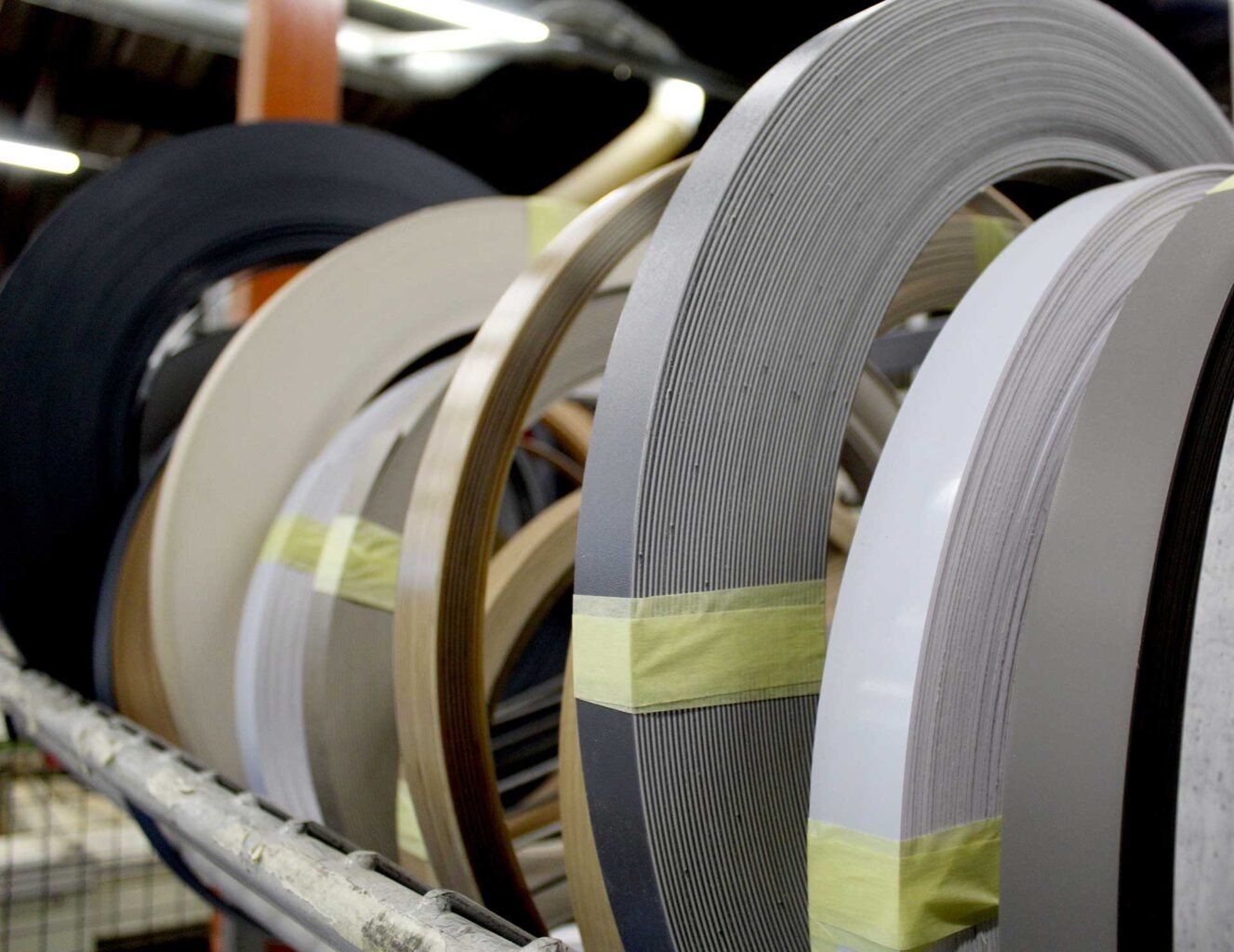
Contact Luyao Today
- Discuss your specific application challenges.
- Request thickness-specific technical data sheets.
- Order custom-engineered samples.
- Optimize your edge performance and costs.



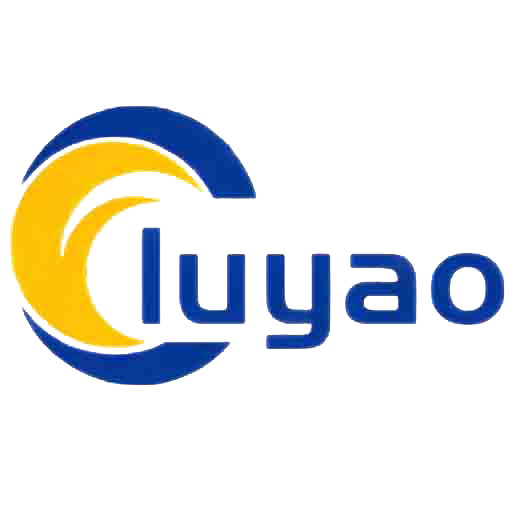





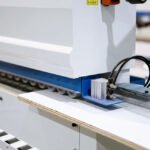

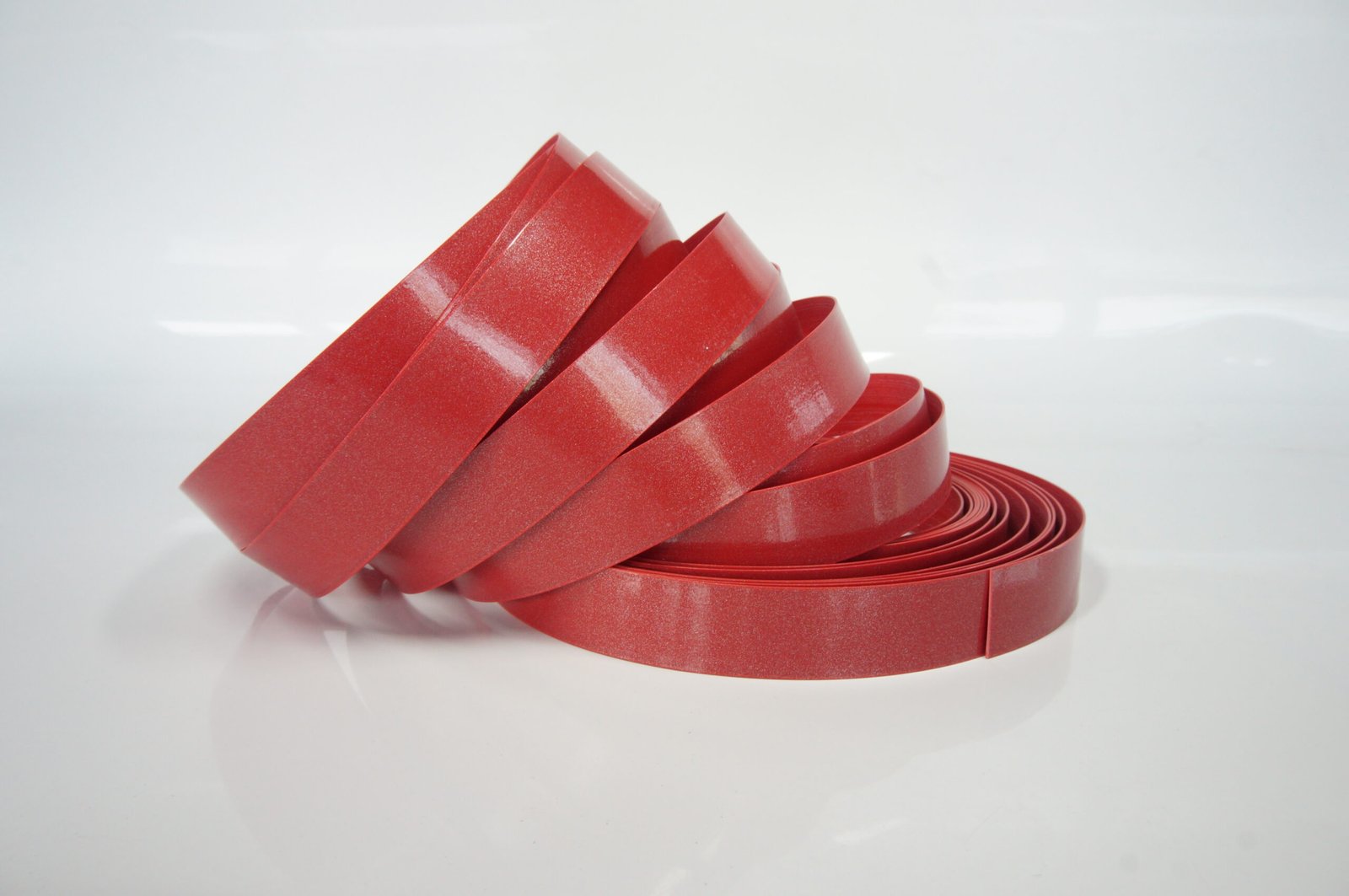
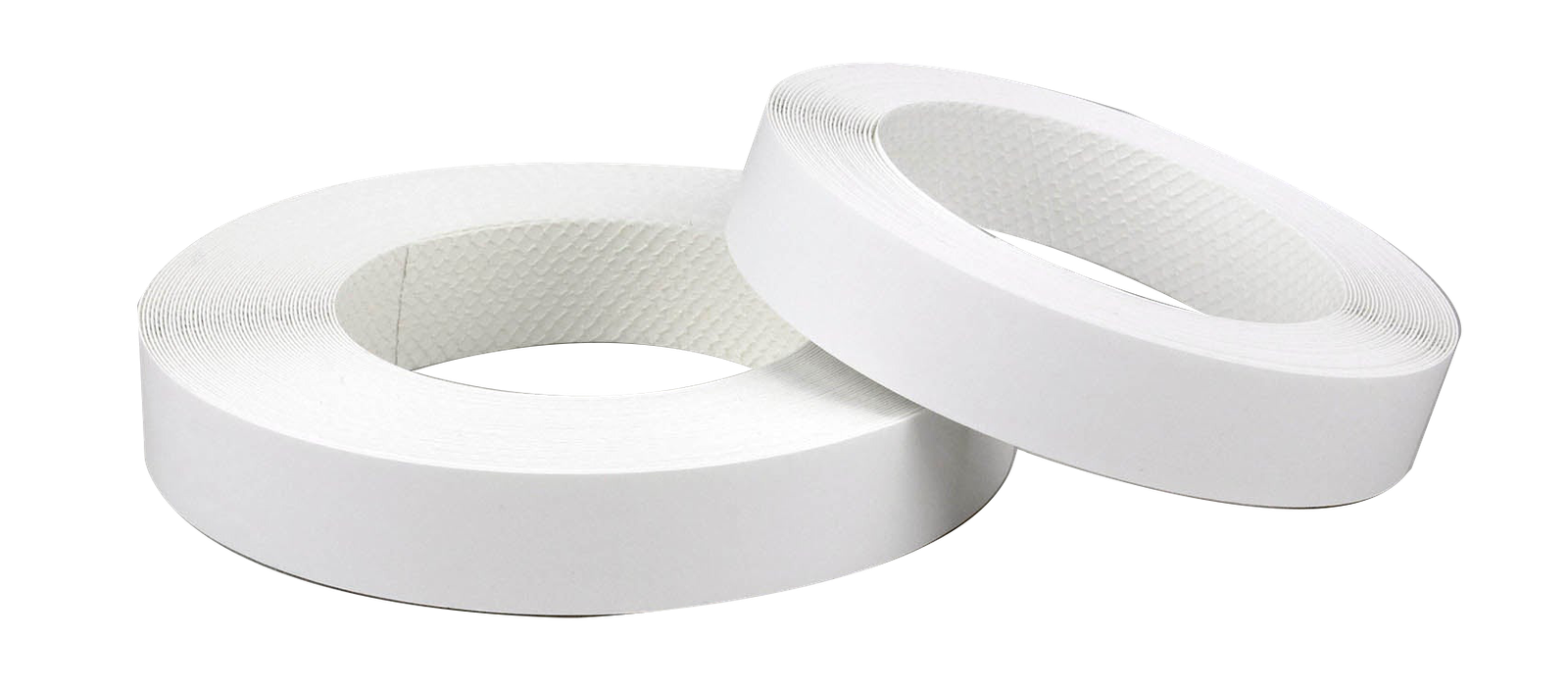


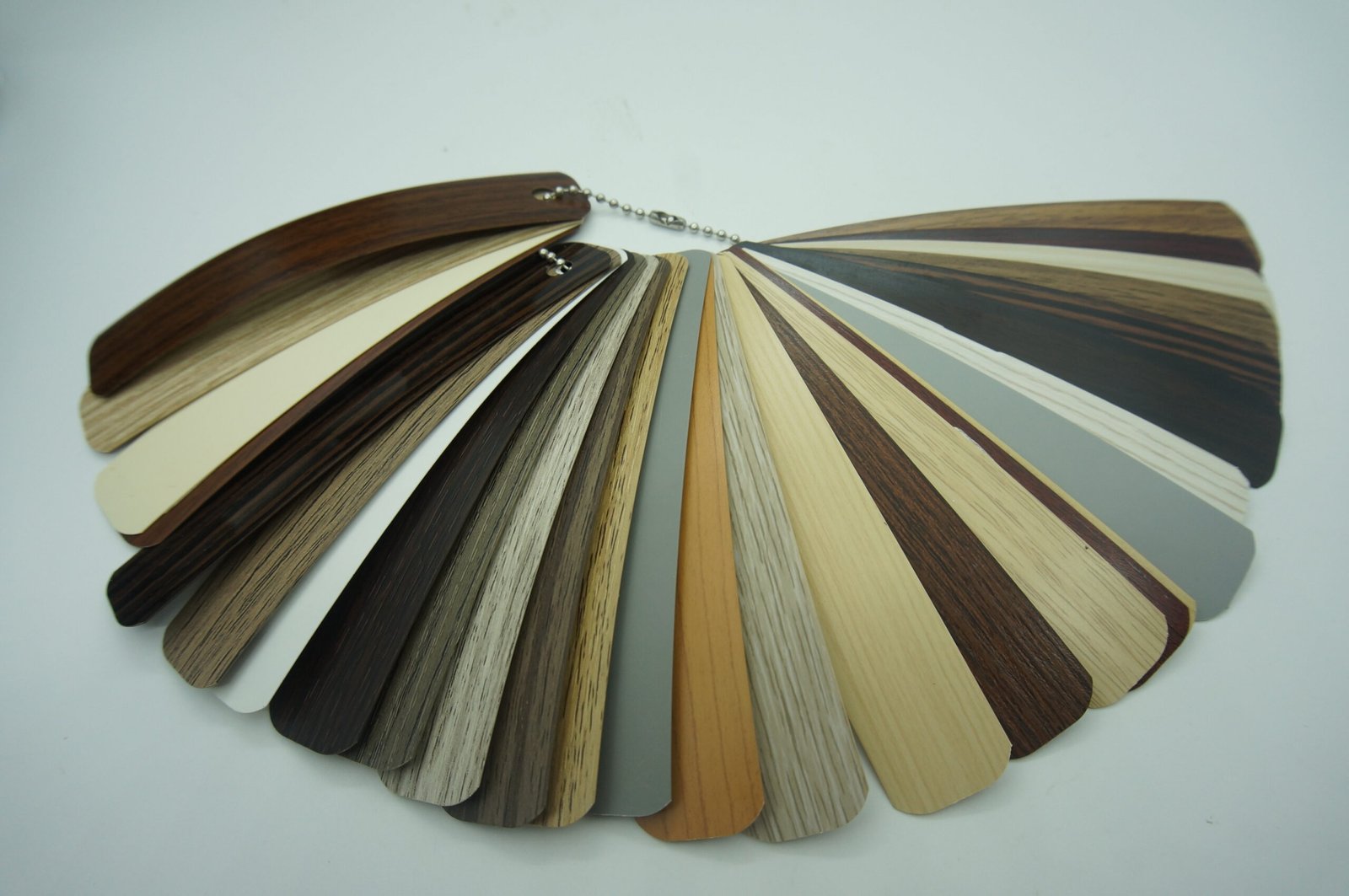
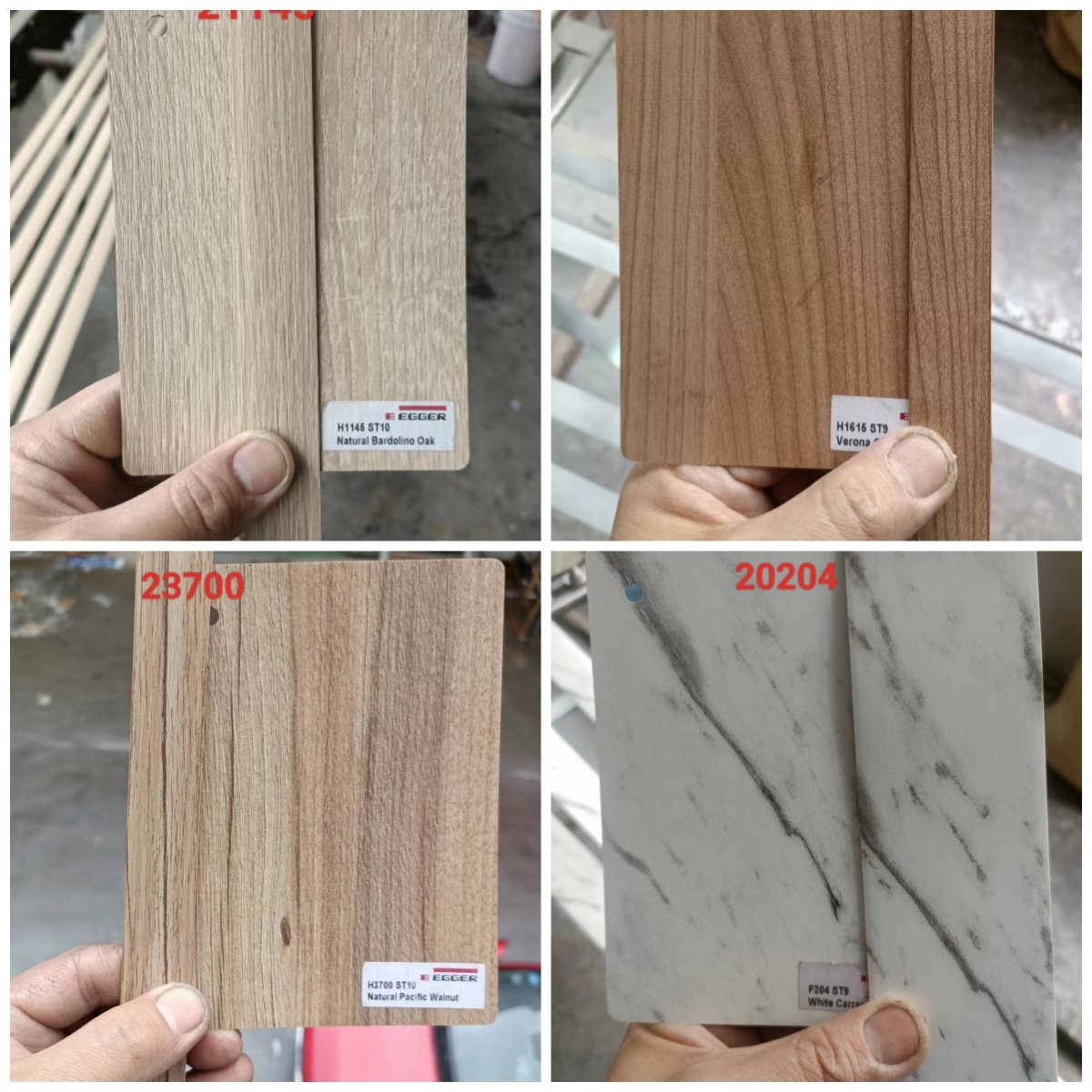





Leave a Reply